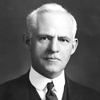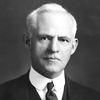CommunityFoundationAtlas.org
Documenting the Movement’s Global Impact
Since the creation of the world’s first community foundation in Cleveland, Ohio, in 1914, the concept of citizens pooling their assets to create a permanent vehicle for addressing pressing local needs has been adopted and adapted by communities, large and small, on every continent except Antarctica. Over 1,800 community foundations and community philanthropy groups are now working to improve the quality of life in their geographic regions.
Yet, detailed information about the individual identities, locations, assets, roles and effectiveness of these change agents, especially those working outside the United States and Canada, has in many cases been unavailable. A comprehensive picture of the movement’s global impact cannot be easily grasped.
This gap in knowledge of the field will soon be addressed. An international research partnership funded by the Charles Stewart Mott Foundation of Flint, Michigan, is gathering hard data as well as narrative evidence documenting the field’s impact for the world’s first comprehensive atlas of the community foundation movement. As part of its contribution to the 100th anniversary of the movement in 2014, the Cleveland Foundation is collaborating with the Foundation Center, the Global Fund for Community Foundations (GFCF), the Worldwide Initiatives for Grantmaker Support (WINGS) and a team of research and communications specialists to develop an easily accessible online information platform for the field. CommunityFoundationAtlas.org was unveiled in the fall of 2014.
A formal atlas survey was prepared by the project’s research consultant, Barry Knight, a social scientist based in the United Kingdom who has previously assisted the GFCF and WINGS with data gathering, evaluation and knowledge management. This survey was emailed to the field in the fall of 2013. Community foundations that wish to participate may complete the survey online in less than 10 minutes.
In addition to requesting basic contact and operational information, the survey solicits information delineating each community foundation’s work and effectiveness. It concludes with an opportunity for each foundation to share a recent success story.
“We hope that community foundations will seize this unprecedented opportunity to speak directly about their work to a worldwide audience,” says Nick Deychakiwsky, the program officer in charge of the Mott Foundation’s long-standing initiative to support the development of community philanthropy internationally. “The more organizations that participate in this first-ever effort to gather and present baseline data about as many members of the community foundation movement as possible, the better the atlas will be able to fulfill some important objectives.”
Via data analysis and interpretation, information sharing and storytelling, CommunityFoundationAtlas.org will help build connections among community foundations that may not be aware of counterparts in other countries, let alone of the similarities in their concerns or approaches. Another objective is to help government officials, policy makers, potential philanthropic partners and ordinary citizens understand and tap into the power of community foundations to effect positive change and innovation. “If the field enthusiastically embraces this outreach effort,” says Ronald B. Richard, president and CEO of the Cleveland Foundation, “the lessons we will learn should be eye-opening and empowering.”


